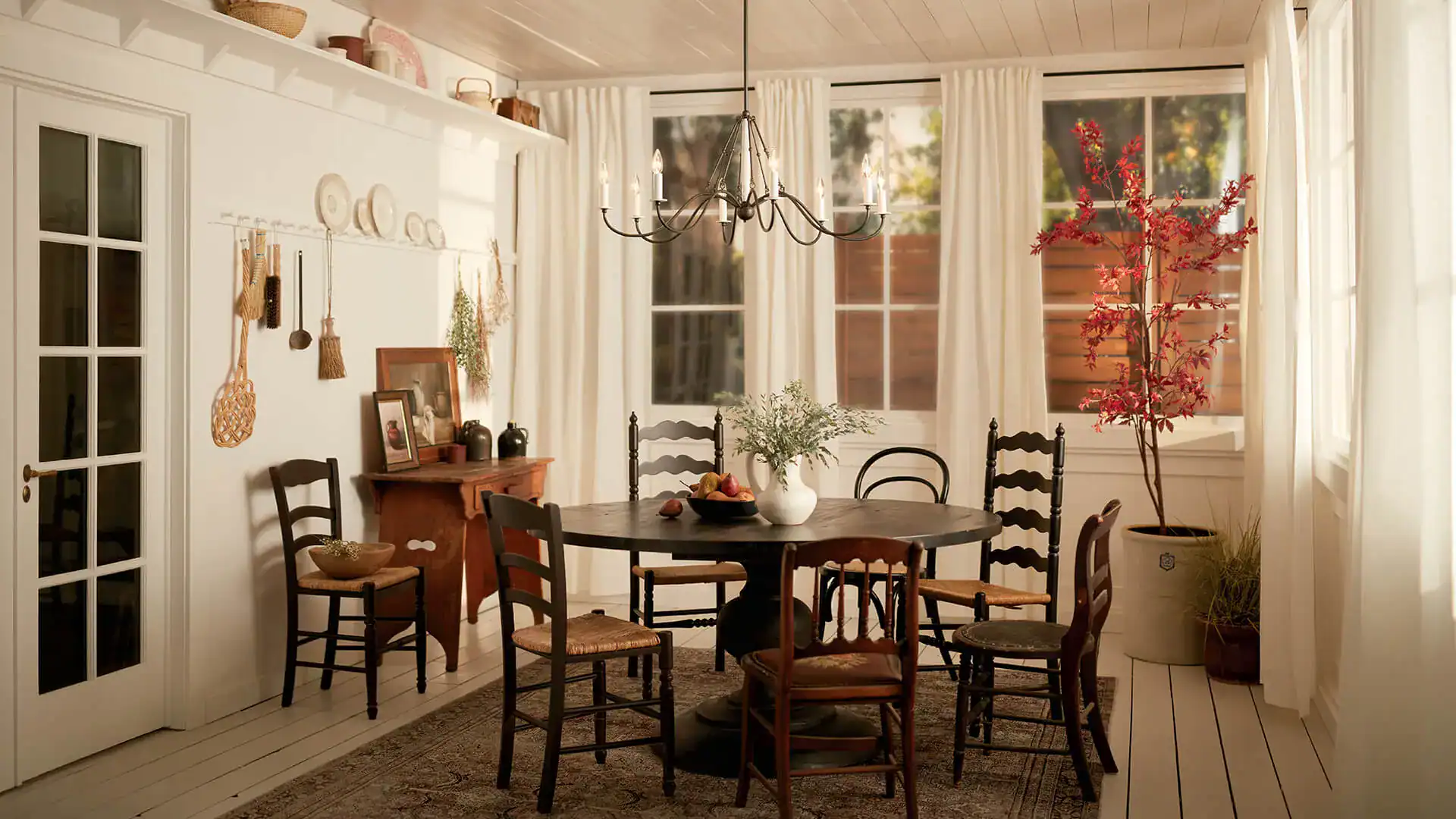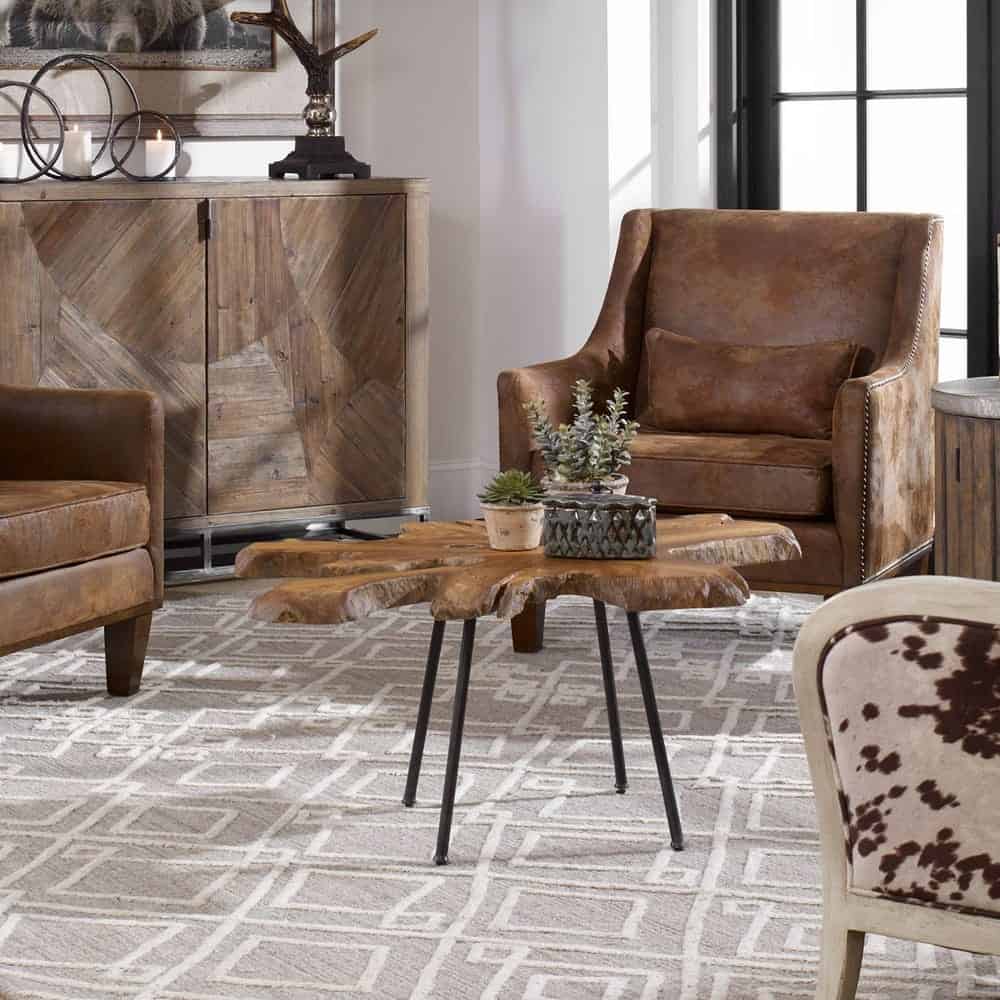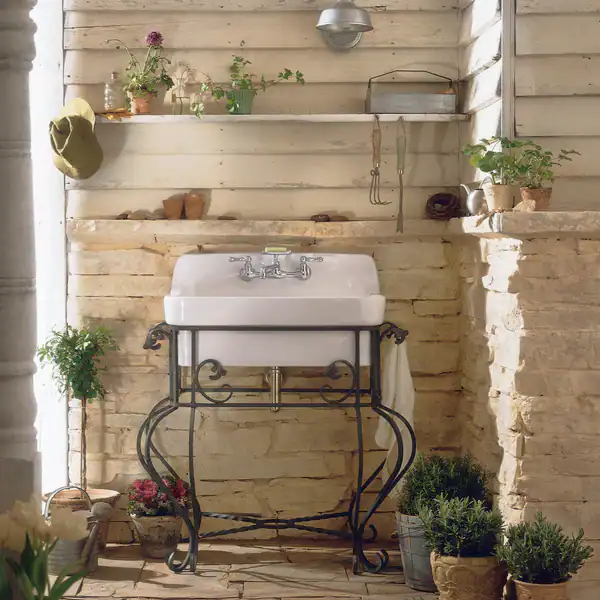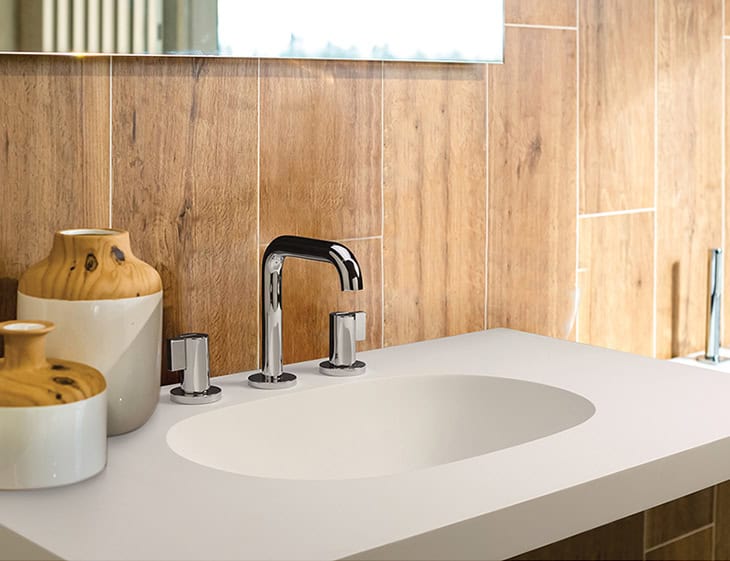
Elkay
Fireclay Double Bowl Workstation Sink

Rustic style draws on the raw beauty of natural materials and the charm of simple, honest craftsmanship. Inspired by rural living and rugged character, it uses earthy, hand-hewn textures and sturdy functionality to make living spaces both a refuge from and a celebration of the outdoors. Weathered wood, natural stone, aged or patinated metal, and woven fibers bring warmth and authenticity to every space. The look is inviting and unpretentious, creating rooms that feel lived in, well-loved and deeply connected to the landscape beyond their walls.
While rustic design honors natural materials, simple craftsmanship and a connection to the land, that doesn’t mean it’s limited to just one look. In fact, rustic is one of the most versatile design styles today.
A modern home might pair clean architectural lines with reclaimed wood beams and matte black fixtures. Cottage rustic favors cozy scale and handmade detail while Western style celebrates the wide-open feel of ranch life. No matter the variation, rustic style is about bringing the outside in, finding beauty in imperfection and creating spaces that endure.
Rustic style carries with it a sense of memory. It honors the craftsmanship, labor and resourcefulness of earlier generations by giving new life to the materials they once shaped or by reimagining them through new creations.
Beams salvaged from an old barn, floorboards reclaimed from a mill or factory, or iron gears and pulleys once part of a working machine each resonate with endurance and purpose.
Even if it’s something new, rustic elements remind us of the people whose hands built, repaired and used them in a time when utility and beauty were intertwined by necessity. In a rustic home, those echoes of history ground the space in something larger than the style itself. They connect past and present, offering continuity in a world that changes quickly.
Rustic interiors are grounded in the weight and authenticity of their materials. Beams, stonework, leather and solid wood furniture bring a tangible presence to every room. Even smaller rooms feel full of life with a sense of the generations who lived and worked within them. Gloss and pretense have no place here. What you see is what you get, and every surface tells a story of use and care.



Materials, textures and a color palette mirroring the natural world bring rustic style to life. Hand-hewn wood beams in warm honey or deep walnut, sun-bleached floorboards and solid stone surfaces often form the backbone of a space. However, it’s often the rich chestnut tones of leather and the softly muted shades of linen, wool and woven fibers that add warmth and comfort.
Rustic interior decor features primitive antiques, repurposed tools, hand-thrown ceramics and vintage finds, with colors like terracotta, ochre or softly faded blues and greens highlighting each piece. Metals contrast with softer natural materials. Even small elements like a well-worn door handle or a weathered tabletop contribute to the sense of continuity.

Fireclay Double Bowl Workstation Sink

Antique Hot and Cold Water Dispenser

Barrington Pendant light

Elise 230 freestanding bathtub

Kravitz Coffee Table

Born in the homes and outbuildings of farmers, pioneers and craftsmen, rustic style continues to hallmark spaces shaped by work and the touch of human hands. In Europe, it first emerged in farmhouses, cottages and mountain lodges, where builders relied on local timber, stone and natural fibers to create functional interiors.
Hand-hewn beams, massive stone hearths and sturdy furniture reflected both the daily rhythms of life and the ingenuity of craftsmen who made do with what was available. Furniture was designed for utility first, arranged to suit the flow of everyday tasks, yet the distinctive pieces’ scale and weight gave the rooms a sense of permanence.
Across the Atlantic, North America saw a similar evolution. Early settlers, pioneers and homesteaders constructed homes and outbuildings from the materials they found on the land—wide plank floors, log walls and rough-hewn beams. Tables, benches and storage chests were built and arranged for family life and work while complementing the structural features of the home. Mountain lodges and frontier farmhouses blended European traditions, producing interiors that were practical, durable and fit for the surrounding landscape.
Despite its functionality, rustic design has always been more than just utilitarian. The style brings a story to every surface and object. Floors worn smooth by generations of footsteps, ceilings held up by beams that once framed barns, and furniture crafted by hand all find a home here.
Today, rustic style continues to evolve. Various style interpretations all draw on these foundations. Yet, each preserves the central rustic ethos of a reverence for natural materials, skilled hands and layouts that honor both comfort and timelessness.
If you’d like to bring the warmth, character and beauty of rustic style to your home, reach out to Coburn’s. Our team of home design consultants can show you how to create rustic spaces that feel lived-in and unmistakably yours.